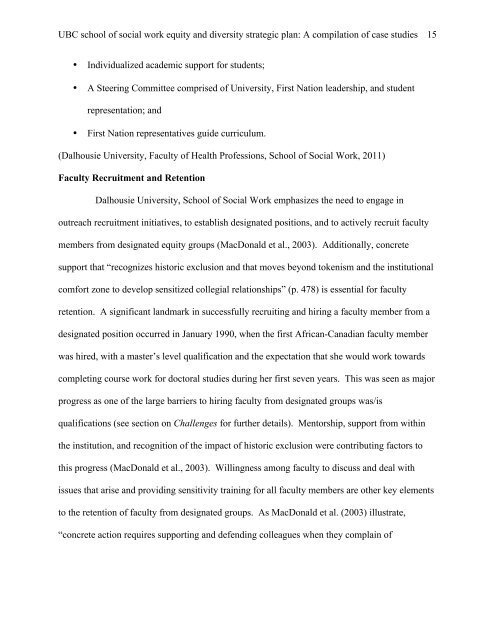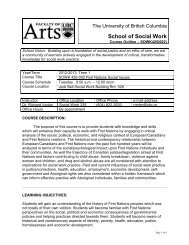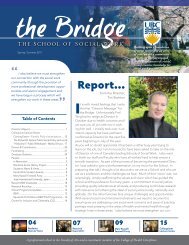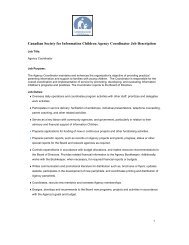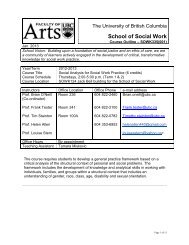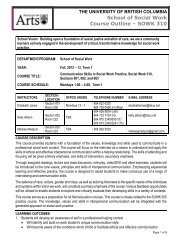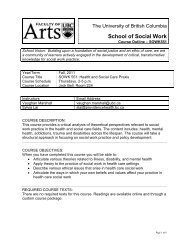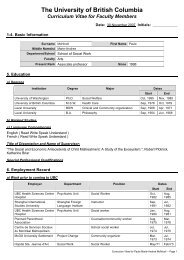Equity Case Studies Report - School of Social Work - University of ...
Equity Case Studies Report - School of Social Work - University of ...
Equity Case Studies Report - School of Social Work - University of ...
Create successful ePaper yourself
Turn your PDF publications into a flip-book with our unique Google optimized e-Paper software.
UBC school <strong>of</strong> social work equity and diversity strategic plan: A compilation <strong>of</strong> case studies 15<br />
• Individualized academic support for students;<br />
• A Steering Committee comprised <strong>of</strong> <strong>University</strong>, First Nation leadership, and student<br />
representation; and<br />
• First Nation representatives guide curriculum.<br />
(Dalhousie <strong>University</strong>, Faculty <strong>of</strong> Health Pr<strong>of</strong>essions, <strong>School</strong> <strong>of</strong> <strong>Social</strong> <strong>Work</strong>, 2011)<br />
Faculty Recruitment and Retention<br />
Dalhousie <strong>University</strong>, <strong>School</strong> <strong>of</strong> <strong>Social</strong> <strong>Work</strong> emphasizes the need to engage in<br />
outreach recruitment initiatives, to establish designated positions, and to actively recruit faculty<br />
members from designated equity groups (MacDonald et al., 2003). Additionally, concrete<br />
support that “recognizes historic exclusion and that moves beyond tokenism and the institutional<br />
comfort zone to develop sensitized collegial relationships” (p. 478) is essential for faculty<br />
retention. A significant landmark in successfully recruiting and hiring a faculty member from a<br />
designated position occurred in January 1990, when the first African-Canadian faculty member<br />
was hired, with a master’s level qualification and the expectation that she would work towards<br />
completing course work for doctoral studies during her first seven years. This was seen as major<br />
progress as one <strong>of</strong> the large barriers to hiring faculty from designated groups was/is<br />
qualifications (see section on Challenges for further details). Mentorship, support from within<br />
the institution, and recognition <strong>of</strong> the impact <strong>of</strong> historic exclusion were contributing factors to<br />
this progress (MacDonald et al., 2003). Willingness among faculty to discuss and deal with<br />
issues that arise and providing sensitivity training for all faculty members are other key elements<br />
to the retention <strong>of</strong> faculty from designated groups. As MacDonald et al. (2003) illustrate,<br />
“concrete action requires supporting and defending colleagues when they complain <strong>of</strong>


